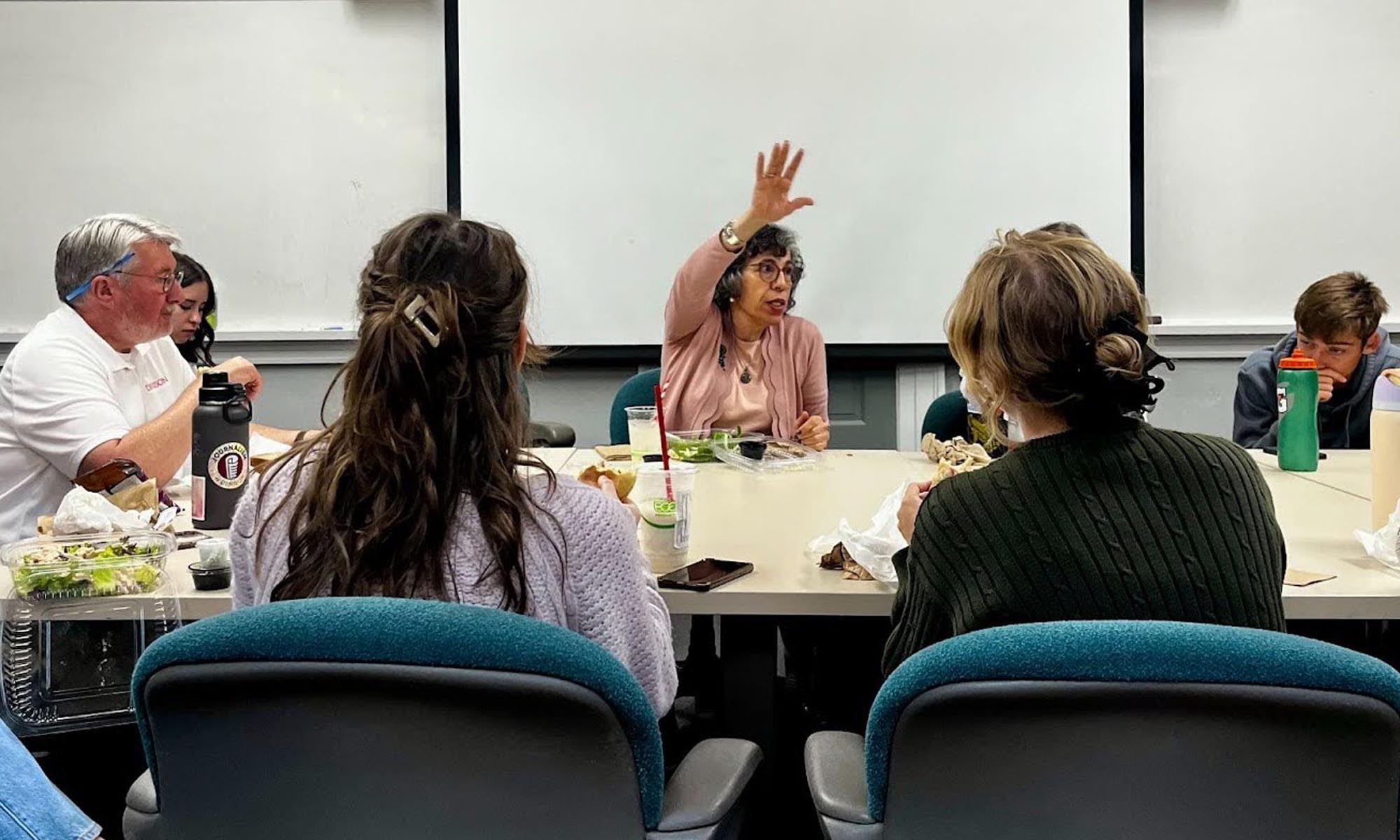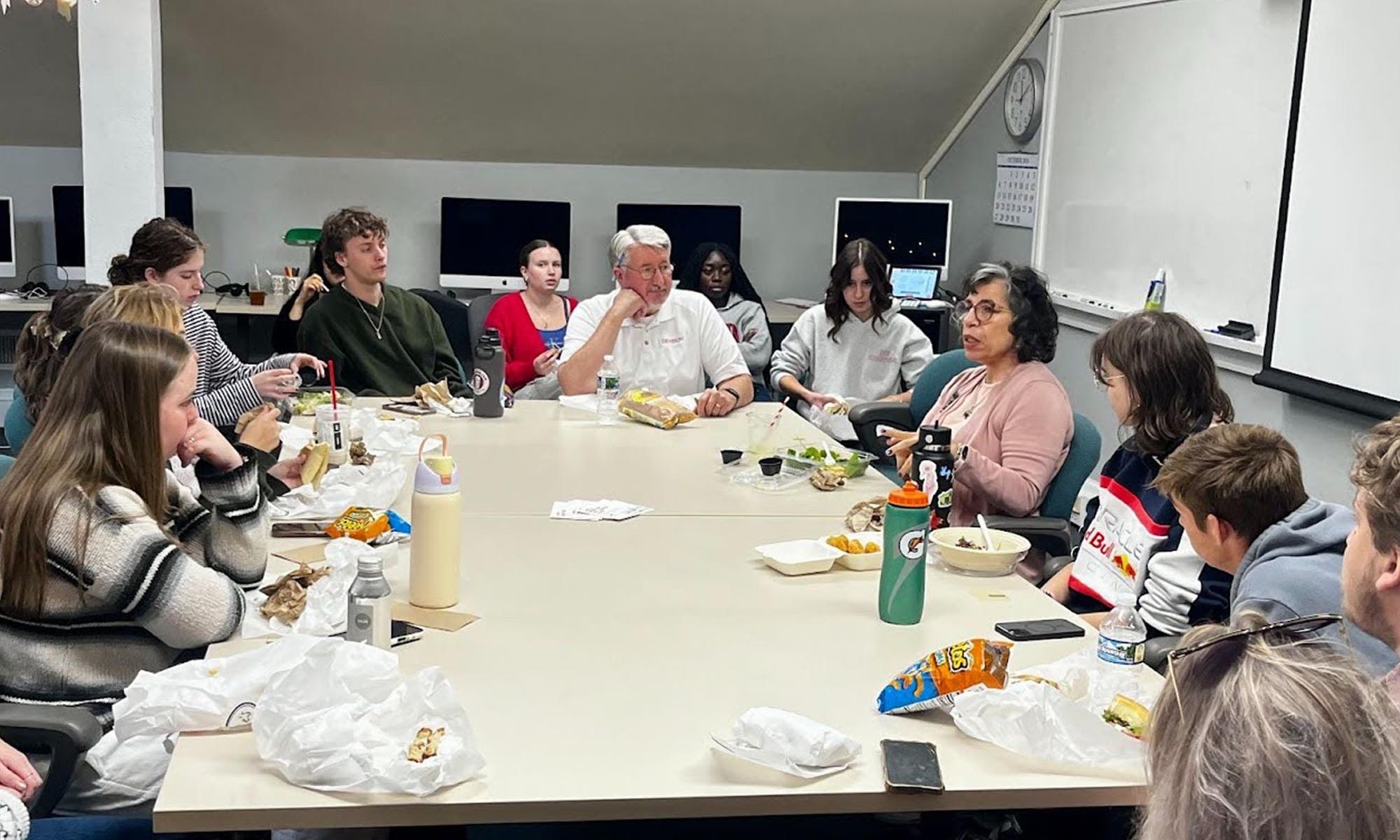

When journalist Anne Saker unexpectedly was assigned to cover religion in North Carolina, she embraced the challenge with openness and the mantra, “How hard can this be?”
“Switching into something that you don’t know anything about is a wonderful adventure,” Saker told a group of Denison students at a lunch and learn session arranged by the journalism program.
“Someone has given you money to go learn something — to go talk to the smartest people in the field and learn something from them.”
So, without a strong background in either religion reporting or the Tar Heel State, she immersed herself in the local communities, attended church services, introduced herself to pastors, and engaged with all sorts of congregants.
Armed with a stack of business cards and an eagerness to learn, she quickly built relationships by listening closely to people’s stories and experiences.
Saker’s journalism career includes experience at United Press International, Gannett News Service, The News & Observer of Raleigh, The Oregonian, and The Cincinnati Enquirer. Her reporting has covered critical issues such as mental health, youth suicide, and the transgender community, and she was part of the Pulitzer-winning team for the Enquirer special report, Seven Days of Heroin.
Saker said she has witnessed an industry shift in focus to digital metrics and analytics influencing editorial choices. Metrics on reader engagement, such as click counts and the amount of time a reader spends with a story, are displayed across newsroom screens, helping reporters and editors position stories for maximum reach.
This data-driven approach also can influence decisions on story structure. Newsrooms may opt for shorter formats like “listicles” to capture readers’ attention in hopes of enticing them to read longer pieces.
“Think of it as giving booster fuel to your main story,” she said. “Because it will draw traffic to that listicle, but the listicle will draw traffic to the story.”
She finds some data, such as where readers stop reading an article, especially helpful.
“I could go see what’s happening there,” she said. Then she finds a way to “grab readers by the collar.”
Despite analytics’ benefits, Saker warned against using them as a sole measure of success and reminded the student reporters to keep their focus on the art of storytelling. She also emphasized the importance of passion in journalism, encouraging them to build their careers around the subjects that inspire them most.
Reflecting on her own experiences, Saker urged students to “use the things that you love to create the writing life that you love.”
She emphasized that journalism will endure if driven by dedicated journalists committed to serving their communities.
“If you are in it, I feel much more confident about the future,” she said.
“Local journalism will survive,” she said. “You are going to do it.”














